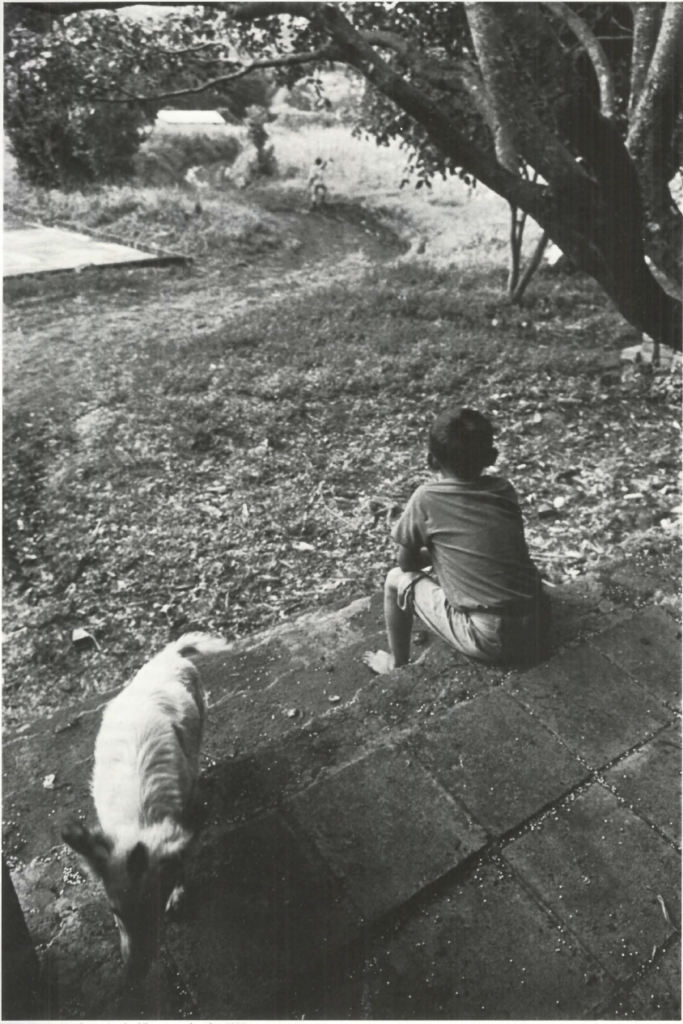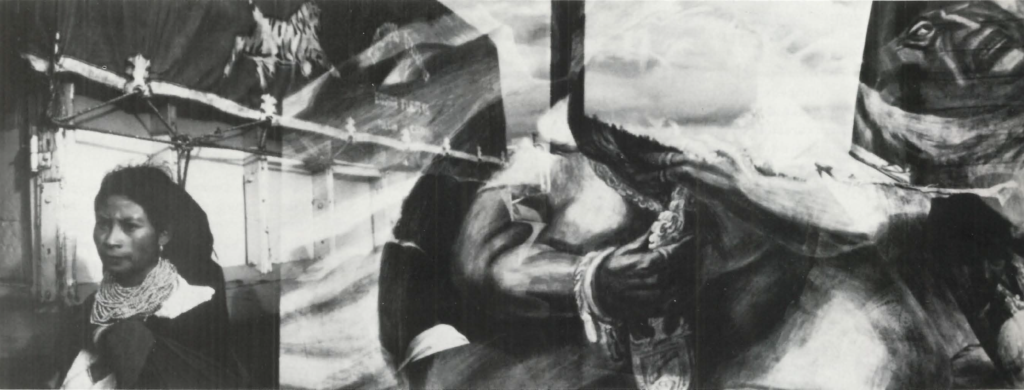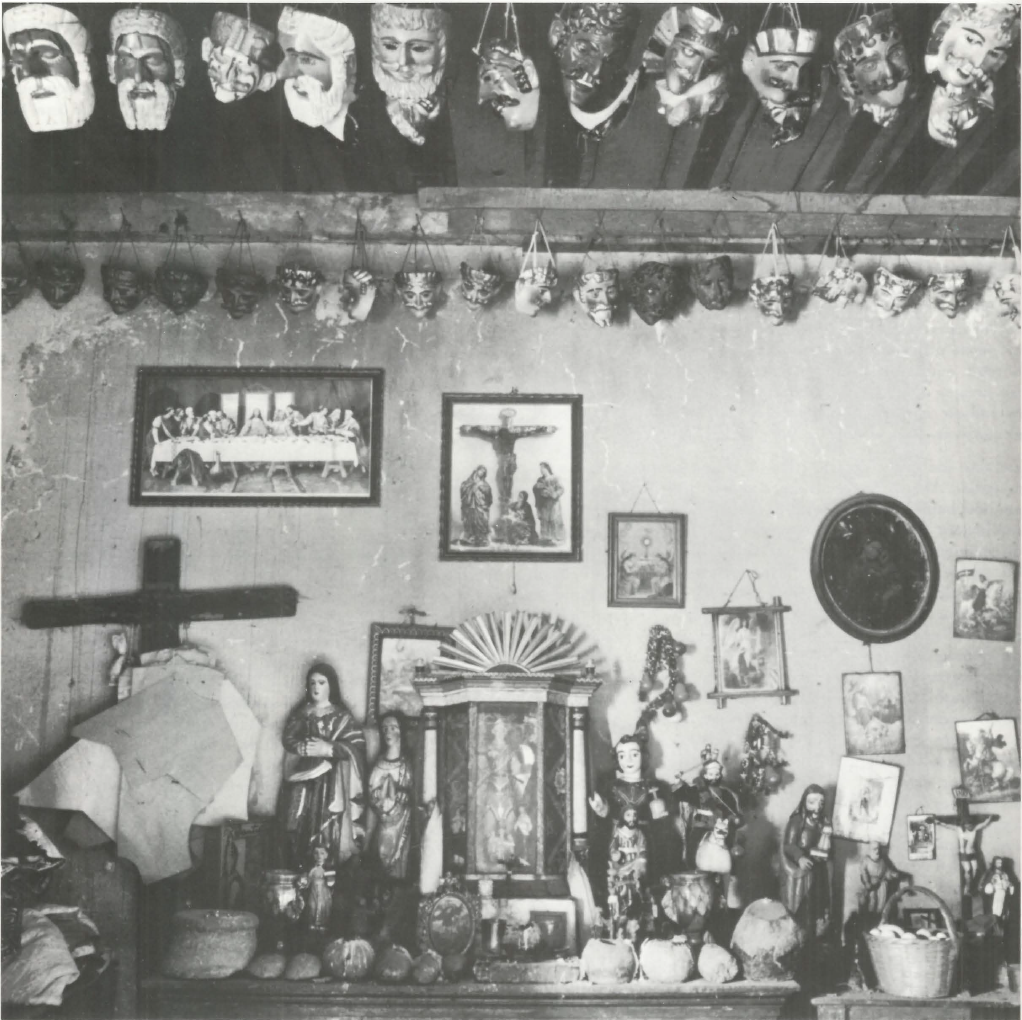Here & Elsewhere: Canadian Photographers of Latin America (1991)

Graham, Robert. (1991). Here & Elsewhere: Canadian Photographers of Latin America. In Le Mois de la Photo à Montréal, pp. 152-160.“To state the contrast schematically, anthropological humanism begins with the different and renders it- through naming, classifying, describing, interpreting – comprehensible. It familiarizes. An ethnographic surrealist practice, by contrast, attacks the familiar, provoking the irruption of otherness – the unexpected. The two attitudes presuppose each other; both are elements within a complex process that generates cultural meanings, definitions of self and other. This process – a permanent ironic play of similarity and difference, the familiar and the strange, the here and the elsewhere is, as I have argued, characteristic of global modernity.” 1
Like the contemporary anthropologist, the Canadian photographer of Latin America maintains an existential straddle between what Clifford Geertz identified as the being there and the being here sides of the ethnographic divide, where there is the domain of the work of inquiry and here is the region of professional display and performance.2 In the specific here and there of Canada and Latin America what the photographer brings back to show is particularly welcome, for Latin America provides Canada with a splendid and eminent cultural elsewhere of almost symmetrical opposition. Of the two experiments in European colonial migration represented in the Americas, the North nurtured the triumph of the Reformation, while the South became the home for a certain mix of transplanted Counter Reformation Catholicism (the bane of Carlos Fuentes) and indigenous symbolics. For the Canadian consciousness Latin America provides an alternative reality. The ways in which the South differs from and opposes the North gives to Latin America a certain critical function. Bored or disgusted with our brand of civilization, expatriates, vagabonds, vacationers, artists, opportunists, adventurers, both seekers-of-themselves and seekers-out-of-themselves, can escape or test themselves, depending on their needs. In an emblematic way, cocaine offers the transgressive options of both narcotic bliss and the hell of a lucrative but brutally murderous industry.
As Malcolm Lowry said of his Mexico: “It is paradisal; it is unquestionably infernal … 3 Yet in thinking back, he also wrote that “these terrible things were not so terrible in memory. So unimaginably frightful and intense had been his suffering that he looked back upon those days almost as he looked back upon the beauty and health of their Canadian life. They were days as beautiful as vultures circling in high sunlight, as beautiful as death that flies just for the love of flying.” 4
William Gass, in making a case for the distinction of fiction, wrote that in Under the Volcano Lowry was “constructing a place, not describing one; he is making a Mexico for the mind where, strictly speaking, there are no menacing volcanoes, only menacing phrases, where complex chains of concepts traverse our consciousness, and where, unlike history, events take place in the moment that we read them.” 5 That was written more than twenty years ago. Since then we have extended this characteristic beyond fiction to the tropes of history, journalism, and to all those representations (including photographs) whose existence matters most only when they are
received and absorbed. While the volcanoes exist without us, the accounts of those volcanoes with their menace and the significance of that menace rely on our attentions.
Drawn to the wars which seem to be a constant plague of the region, Larry Towell shows places of routinized terror in which, “Everything in this world is turned upside down in a grotesque parody of normalcy.” 5 Much of his work includes the strain of danger. As part of the press, the professional photographer is one of a suspect breed – 40 Mexican journalists have been assassinated since 1984, and as a photographer Towell was once refused a visa for El Salvador but granted entry as a tourist. His work is furtive, often taken on the run or under fire. His risks are partly necessary for him to get the pictures that he does, but the dangers he volunteers for give his pictures a moral claim for our concern. Coming from a background of Christian activism, Towell challenges us to see and to care, and then to decide to act.
In his 1984 show, T.N.T., Travailleuses Non Traditionnelles, Alain Chagnon showed women in jobs not usually occupied by women looking, “comfortable, competent and generally happy in their occupations.” 7 And so in Latin America, Chagnon provides a similar service. He is an homologizer. He shows the close and intimate moments of universal, timeless activities – cooking, cultivating – in rural, uncrowded settings. He is a photographer of the normal. His work involves the modest, formally unobtrusive, sympathetic observation of successful integration. These are people at home with their surroundings. The relationship of openness that Chagnon establishes with the scene of his photographs is, if allowed to be, recapitulated by the viewer. Just as he wanted to demonstrate how in the realm of work the difference between men and women can be reduced, so here he seeks to suppress any sense of the exotic and presents a world in which the viewer can construct an empathy and an identification. Chagnon’s Latin America stresses resemblance, the familiar and the recognizable, the ways in which here and there are close and bridgeable.
The contrast between the work these two photographers did recently in Nicaragua illustrates James Clifford’s schematic distinction between humanist and surrealist anthropology. While Chagnon is without paradox or irony and stresses the regularity of life, even under conditions of civil war, Towel I’s moments are divided scenes in which elements of peace and war are presented simultaneously and side by side. A soldier guards a field while festooning his gun with potatoes. A girl laughs and plays with an armadillo while riding in the back of a truck next to a rather seriously armed young man. Towell shows a crucial period of transition in which the effort to gain normalcy during war can result in either the everyday acceptance of horror (which is the triumph of horror) or else the stubbornness of decency to continue under indecent conditions.

Chagnon’s relaxed and Towell’s impassioned faith in the medium is not shared by Ron Benner who manipulates or supplements his large black & white images with props or constructions which underline his suspicion of pure photography’s efficacy. In fact Benner’s scepticism is manifold, for he is wary of anthropological knowledge combining with the power of the camera as imaging tool to support a First World hegemony. His constructions usually contain prominent photographs which he then assaults with metal bolts or detritus, or else builds around and beside the images a distracting and competing set of objects. The materiality of the latter works in tandem with the insubstantiality of the photographic information to produce his critique of transcultural knowledge.

Lorne Greenberg’s montage technique is to take photos of walls – often with murals – rewind the film and then subsequently reshoot the roll with images of people. The result is a series of visually striking superimpositions in which figures and wall blend into suggestive arrangements, create a procession. But as the combining occurs within the camera and produces semi-transparent phantom-like figures which bleed into the background (or it into them), the effect is an artificial, unnatural space which is more literary in its strategy : invoking elements in impossible spaces which cannot be entered by the viewer. The figures are also in an artificial time – their time and the time of their background are not the same -with the effect that the pictures provide a generalized, illustrative function in which the particulars are removed of their specificity. Poetic and symbolic, the pictures resembles in their juxtaposition of bits of the real, the structure of imagination as defined by Giambattista Vico: imagination as compounded memory.

A native Chilean educated in the North, Rafael Goldchain brings a unique contribution to the here/there dichotomy. In making the trip back, he discovers a region both strange and recognizable – he comes to celebrate the “inherent surrealism” of the place and employs his camera to depict “the hybrid realm of the imaginary and the real.” In exultant colour he shows a culture of demonstrative profusion, what Ryszard Kapuscinski found in Latin America and called Baroque : “not only as a style of aesthetics and thought but also as a general commitment to excess and eclecticism. There is a lot of everything here and everything is exaggerated … Fact is mixed
with fantasy here, truth with myth, realism with rhetoric. ” 8
In the here, the there is imaginatively composed of a set of understandings which form the ground upon which these photographers and their photographs figure: Gass’s “Mexico for the mind.” Among the elements of that construction are two which contribute particularly strongly to the making of these photographs. Both are part of that Latin American “strangeness” which fuels a fascination for the makers and viewers of these images.9
The first, frequently portrayed if not fully elaborated, is the fiesta and its power. The fiesta represents an economy of consumption, sacrifice and expenditure which was so favoured by Georges Bataille (one of Michel Foucault’s valued guides) and which seems such a negation of an economy of saving and industrial production. Octavio Paz tells a story of asking the mayor of the poor Mexican town how its small budget was spent and getting the reply, “Mostly on fiestas, senor. We are a small village, but we have two patron saints.” 10 It should not be surprising that artists would be attracted to a society which so privileges matters of visual delight.
The other dominant theme is violence. Death squads, the disappeared, torture and the cult of Death figure as subject matter and as conditions of constant threat. The “incontestable reality” of pain confers upon the power which applies torture a substitute authority. “It is, of course, precisely because the reality of that power is so highly contestable, the regime so unstable, that torture is being used.” 11 Among photography’s basic justifications is as an instrument in any contest over reality, as a non-violent weapon against violence.
What is less clear is the way photography abets a certain appeal for violence. Bataille, again, was fascinated by the cruel theatricality of Aztec human sacrifice. While Foucault (a writer honoured by Ron Benner) criticized the modes of control implicit in procedural justice, he was not squeamish about forms of justice which were quick, violent and terminal. Foucault does not tell us how to turn Latin America towards recognizable democracy. His books demonstrate a greater interest in learning how to live without democracy, especially in its liberal individualistic form. 12 In just such ways, Latin American political culture can be pointed to as indicating some of the possibilities of counter-Enlightenment alternatives.
While writing this essay I received from a retired National Film Board of Canada director a postcard from Mexico. Showing a man wearing a pied hat and costume and carrying a flag of flowers, it read, “This is but one of hundreds of participants in today’s CARNAVAL! (Religious event). People with cameras have been stoned to death (HONESTLY!) … ln Tuxtla we saw a sign on Avenida Medico which read ‘New Noses in Five Minutes Without Surgery.’ Abrazos.” Serendipitously present were so many of here’s ideas of over there: fiesta, photography, death and strangeness.
Robert Graham is a critic and lives in Montreal. His essays deal principally with photographic practice and architecture.
Notes
1 Clifford, James, The Predicament of Culture, (Cambridge, Harvard University Press, 1988), p.145-146.
2 Geertz, Clifford, Works and Lives: The Anthropologist as Author, (Stanford, Stanford University Press, 1988).
3 Day, Douglas, Malcolm Lowry, (New York, Oxford University Press, 1973), p. 320.
4 Day, p. 247-248.
5 Gass, William H., Fiction and the Figures of Life, (New York, Knopf, 1970), p. 57. Lowry’s story of the Consul encountering the Mexican Day of the Dead must have impressed Ron Benner for he recommended the novel to one of his commentators.
6 Enright, Robert, “The Unbearable Darkness of Being,” Border Crossings, Spring 1990, p. 5
7 Samuels, Chuck, “Supportive, Exploitive, Appropriative? Five Male Photographers Approach women’s Issues”, Fuse. Spring 1985, p. 29.
8 Kapuscinski, Ryszard, “In a Baroque Land”, Harper’s, March 1991, p. 34-35.
9 At its worst, a taste for the strange produces a literature of the “funny foreigner”, which even Bruce Chatwin’s In Patagonia comes awfully close to being.
10 Paz, Octavio, The Labyrinth of Solitude, (New York, Grove Press, 1985), p. 50.
11 Scarry, Elaine, The Body in Pain: The Making and Unmaking of the World, (New York, Oxford University Press, 1985), p. 27.
12 Eagleton, Terry has described Foucault as “a French post-Marxist intellectual for whom the very notion of human emancipation was so much romantic blather.” Times Literary Supplement, January 18, 1991, p. 7.